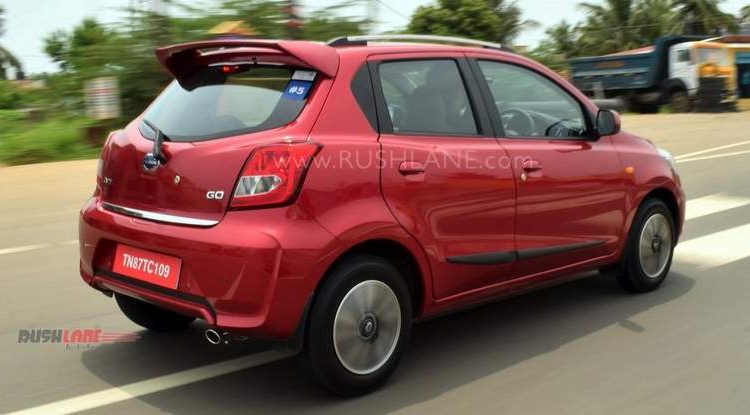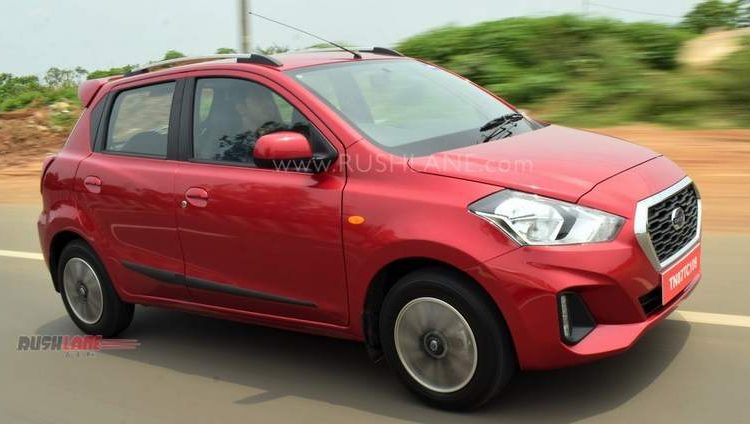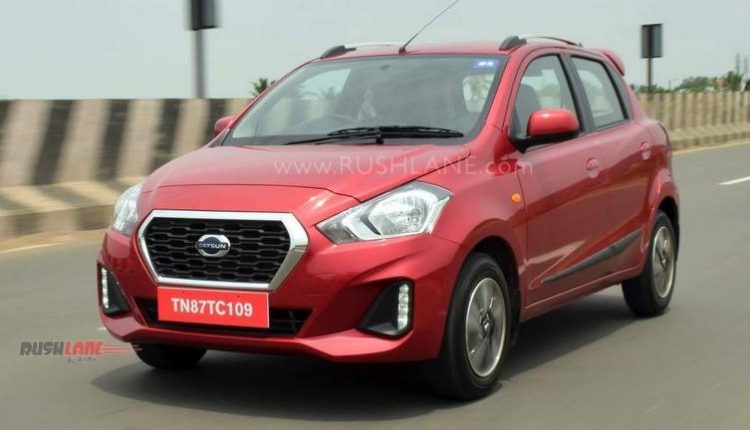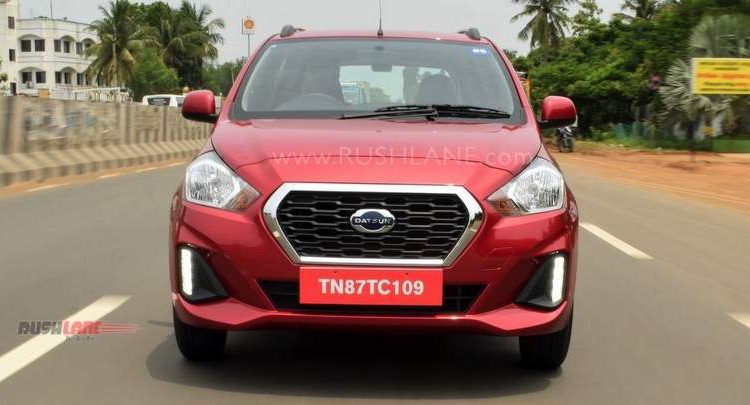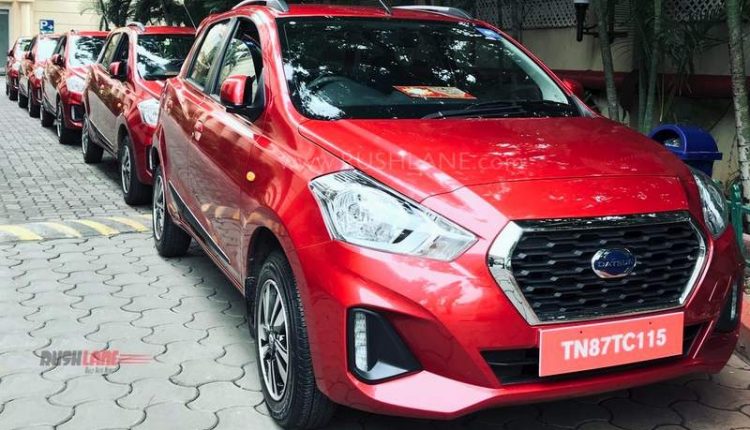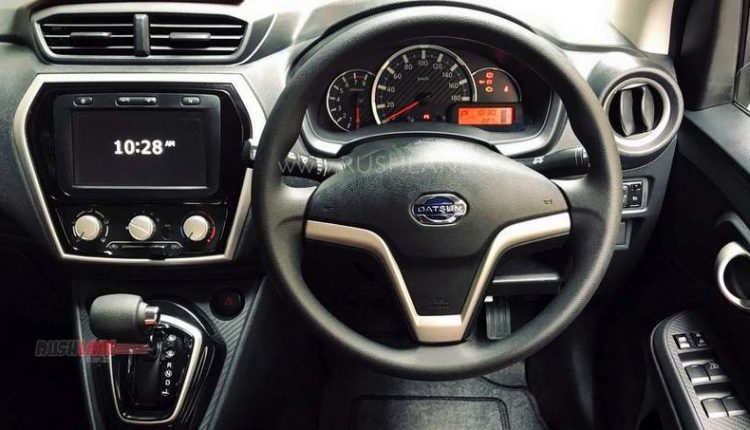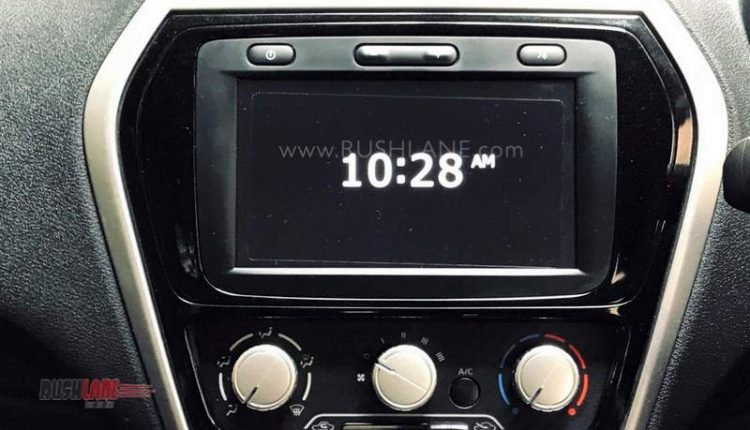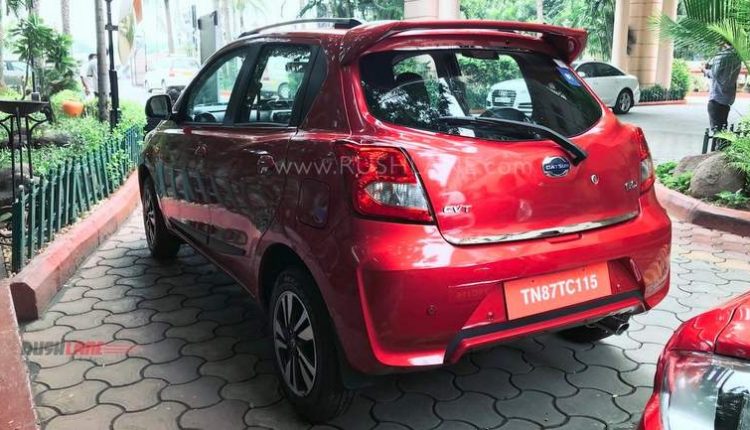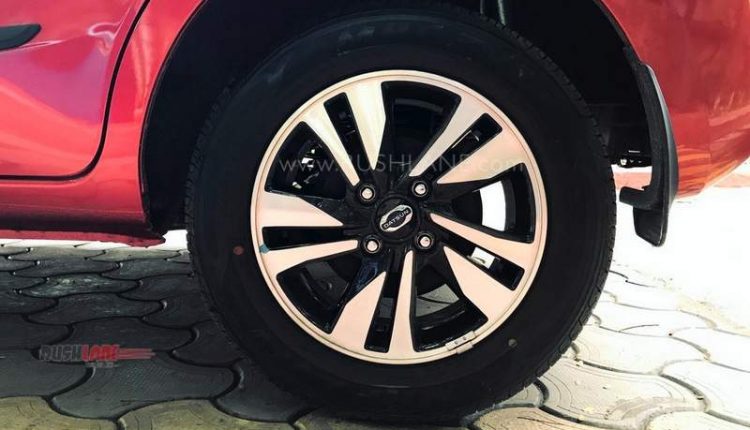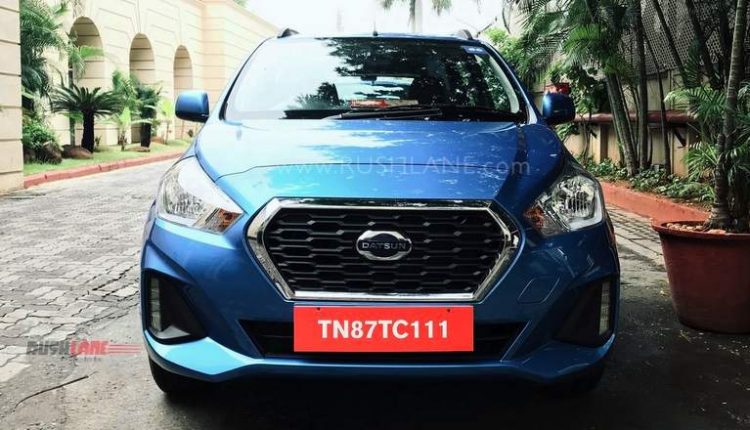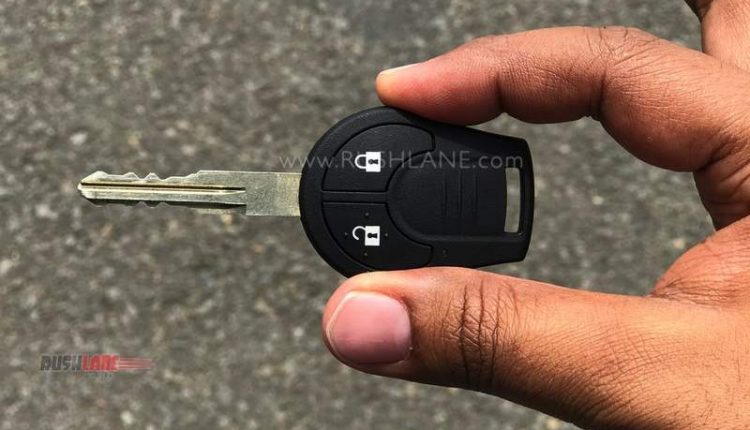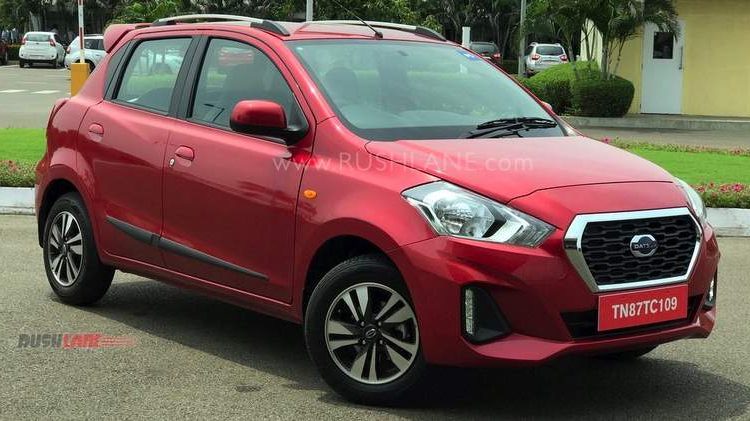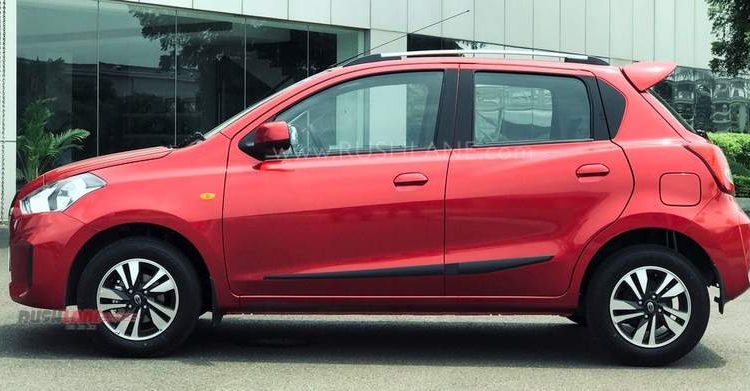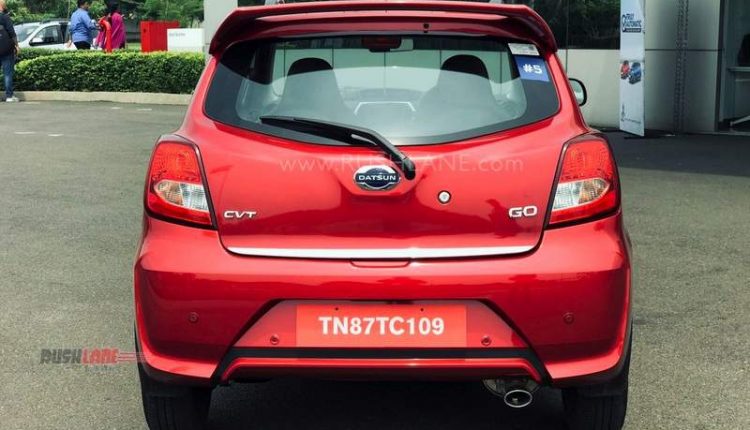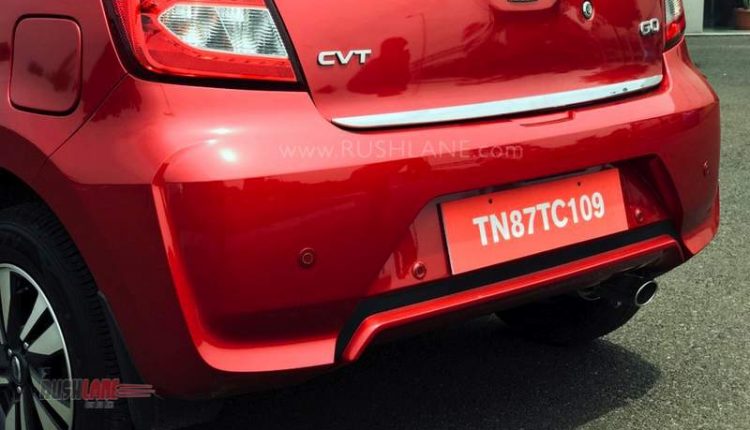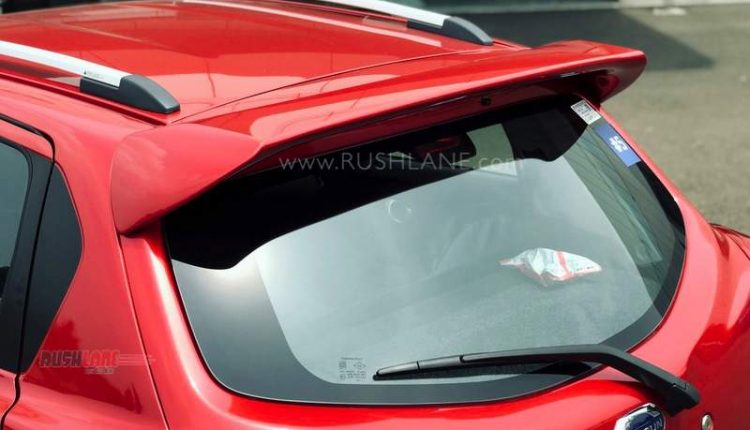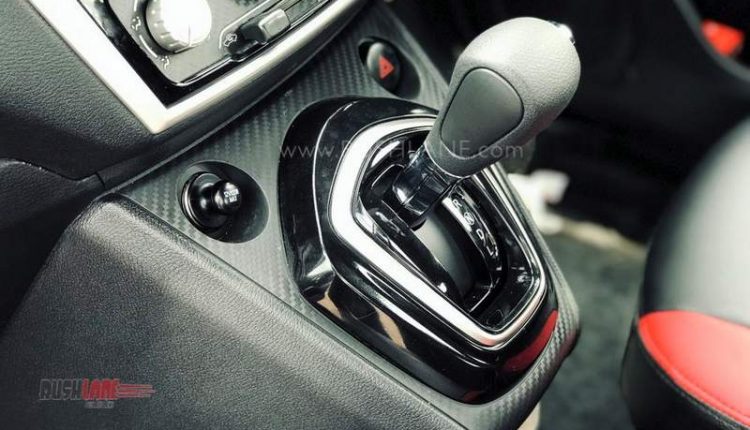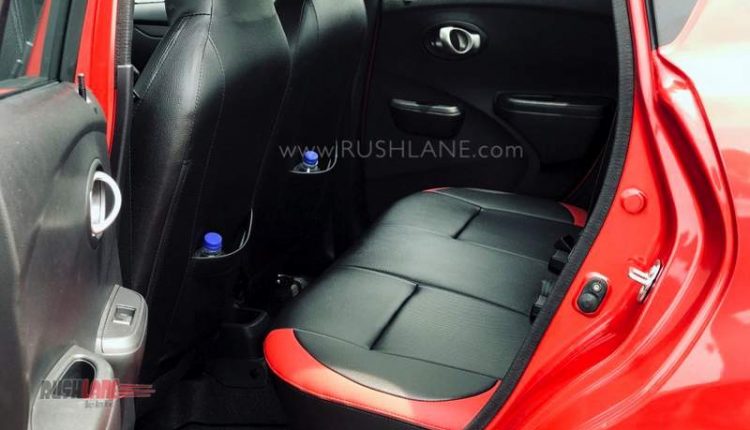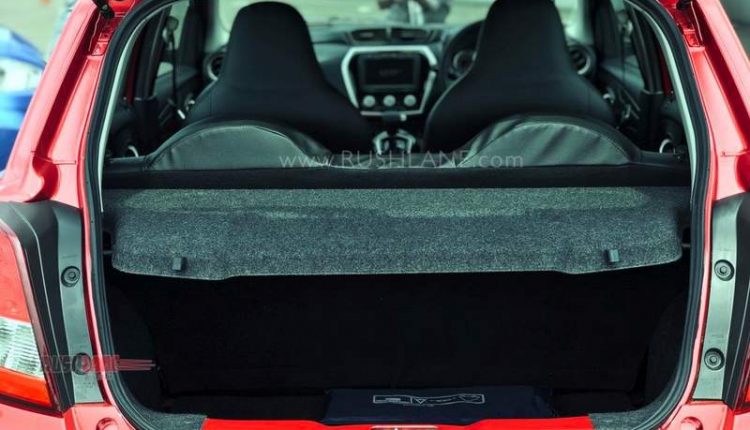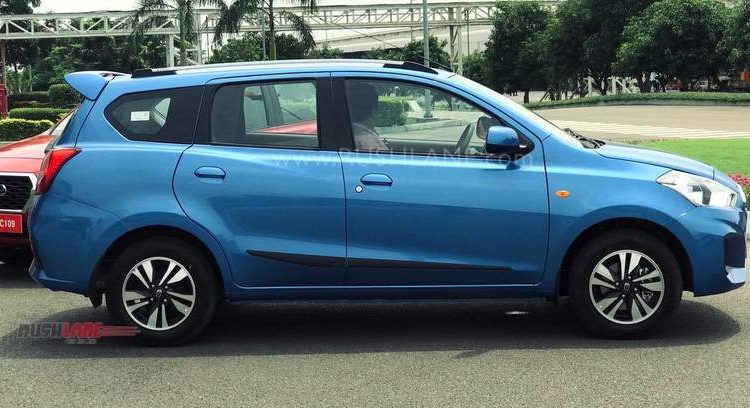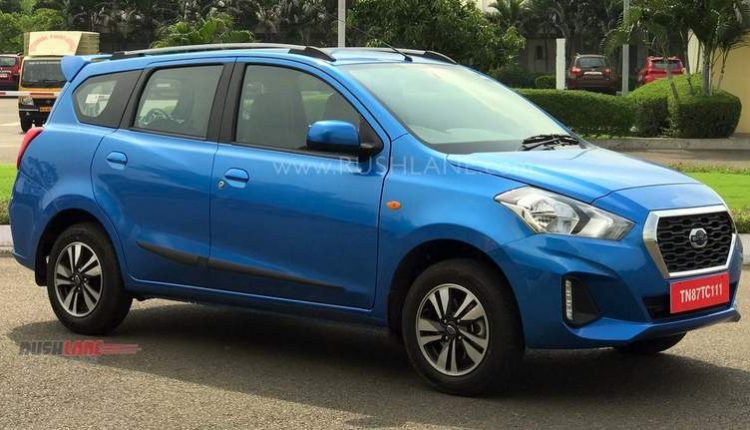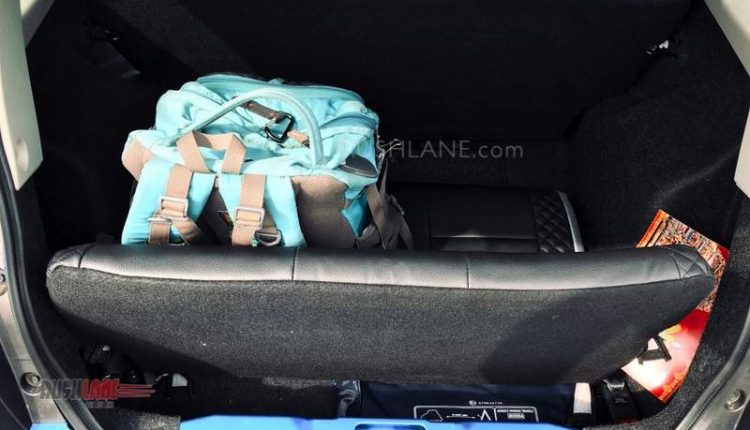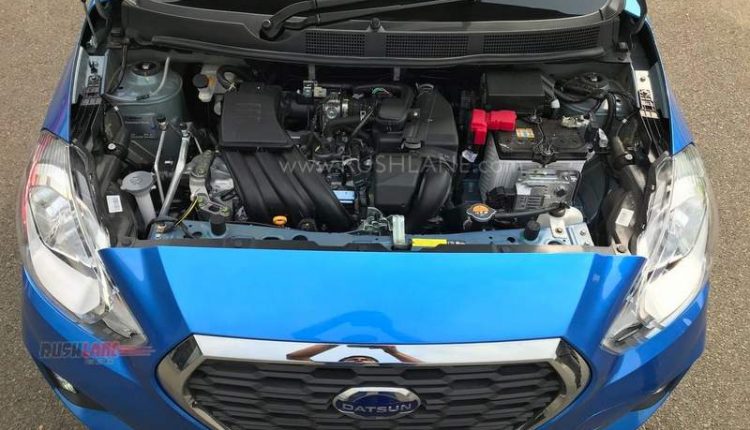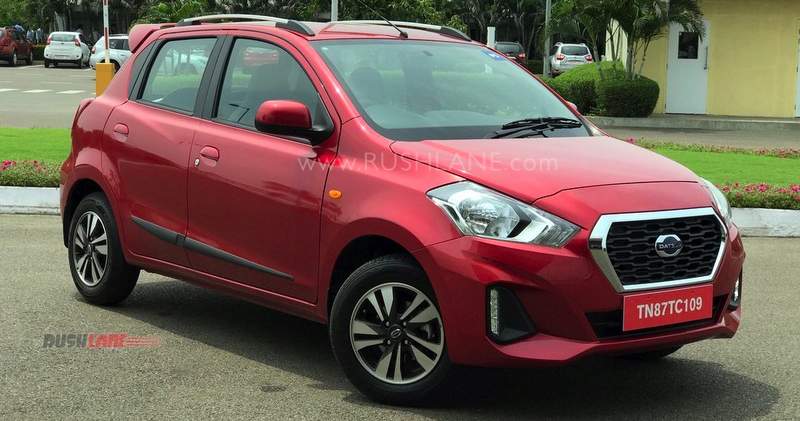
With the CVT, Datsun Go and Go Plus ticks almost everything a prospective buyer can ask for in a car, especially in their respective segments which are quite cut throat when it comes to competition. The customers are extremely spoilt for choice in this price category, where in even a small price difference matters a lot to the customer.
In that case if they compare and figure out that there are some features missing that another car offers, the comparison ends right there for the underequipped candidate. Around the same time last year, Datsun introduced the facelift version of the Go hatchback and the Go+ MPV, which covered almost all the cosmetic and technological upgrades buyers of this generation would be demanding.
The somewhat innocent looking car which was considered chic at its time of introduction, received a rather sporty and edgy cosmetic makeover, comprising of a quite shapely front number with a well pronounced lip and a set of vertical LED DRLs, a slightly larger and more awaken headlamps, bold and trendy looking front grille, new dual-tone side mirrors with integrated turn indicators, a refreshed rear bumper, a well conspicuous rear spoiler, and 14-inch diamond cut alloy wheels. The interior has a significantly new appeal, with all-black with a hint of red on the Datsun Go hatchback and a dual tone light and dark theme on the Go+ MPV.
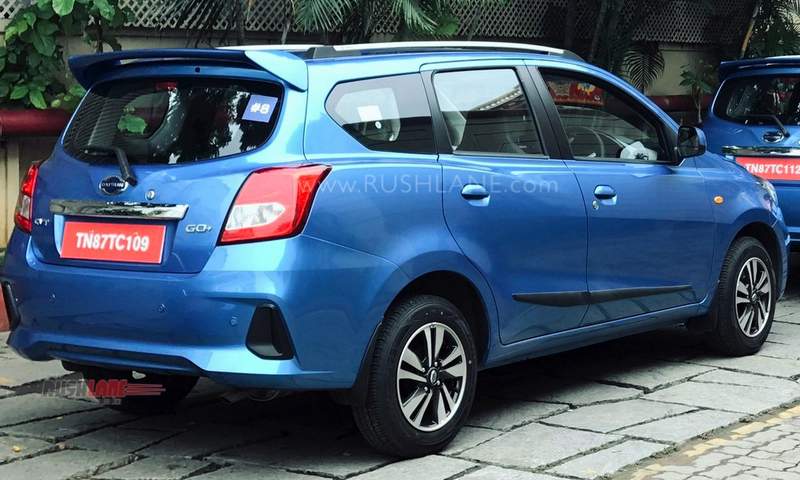
The functional and technological feature highlights include a 7-inch capacitive touchscreen that has Apple CarPlay and Android Auto apart front standard connectivity options, HD video playback, google maps navigation via smartphone, sadly only 2 speakers (at the front) which are decent, and voice recognition.
Other bells and whistles include a new instrument cluster with sporty analog tachometer in the higher variants, regular captain seats on the front row instead of bench seat on the passenger side covering the middle portion too, front airbags as standard, seatbelt reminder for driver and shotgun, ABS with EBD and Brake Assist, and reverse parking sensors with beeper.
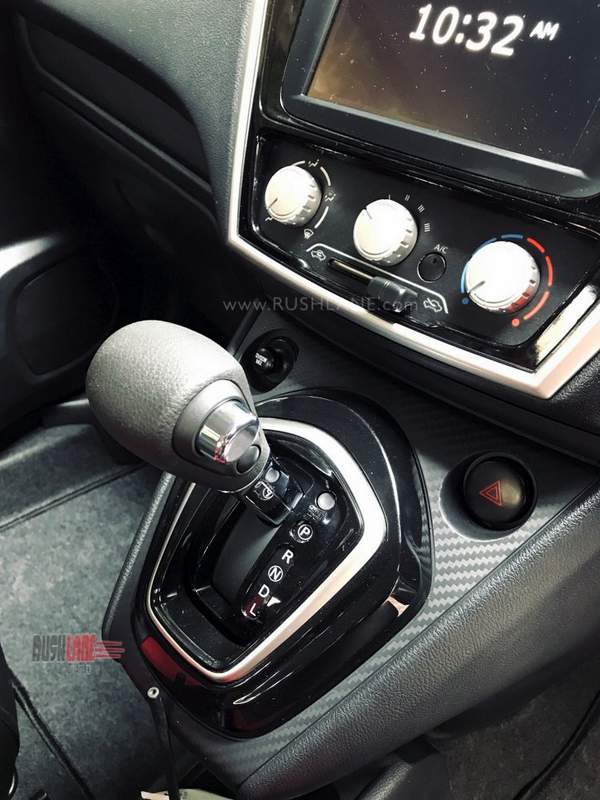
While all the above were just a refresher on what was introduced in the year old facelift model, the main addition in the new version now is the Speed Sensing Auto Door Lock and the car meeting the safety regulations for side crash and pedestrian protection, apart from the CVT setup.
The powertrain remains the same 1.2-litre three-cylinder HR12 DE petrol engine that is well known for its duty in the Nissan Micra Active. While this engine produces 68 PS of maximum power at 5,000 rpm and 104 Nm of peak torque at 4,000 rpm in the manual variants, the Datsun Go CVT automatic features a slight change that results 77 PS at 6,000 pm and same 104 Nm at a slightly later 4,400 rpm.

The naturally aspirated DOHC engine that manages an economy of 19.72 kmpl on the manual variant, claims 20.07 kmpl with the CVT attached to it. That’s the case of the Datsun Go AT. On the Go Plus MPV, the CVT model is said to return 19.41 kmpl in driving conditions that probably only ARAI can meet and achieve. It is to be noted that the automatic variants have gained a few pounds compared to their manual counterpart, 27 kg to be precise, to tip the scales at 913 kg (kerb weight).
We had a brief experience with the CVT variants of with both the vehicles in the city of Chennai, needless to say in dense traffic conditions and later a small stretch of free road at the famous Oragadam industrial estate where the Renault Nissan plant is located. As expected, the overall ride quality was smooth, calm and convenient, especially in the given driving environment. There was obvious and profound engine noise in the cabin that is usually expected of most CVT-equipped cars, but that is something that could be lived with for the boon of not having to clutch and declutch every 3 meters on the road for the next 1 hour.
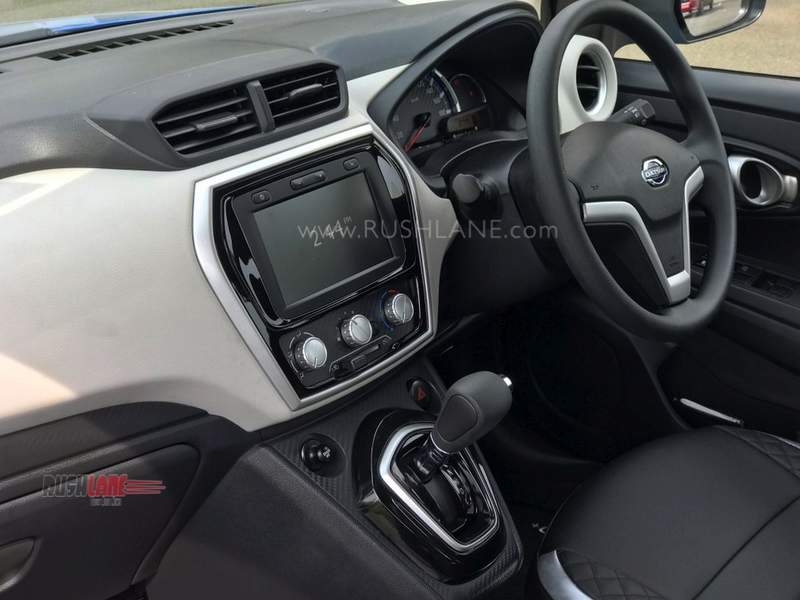
The advantage of typical CVTs is felt clearly on the Datsun Go automatic as well, which is the steady and linear progression of speed and acceleration. This enables very convenient navigation in tightly packed city traffic, as the CVT technology is devoid of fairly prominent lurches of mechanical gear shifts, not to mention the dilemma of “is it the right time to shift up or should I stay revving in the same gear”, in not only manual transmissions, but also in the CVT-alternative AMT systems.
That being said, it is important to mention that the Datsun Go automatic is the most affordable CVT car in the country, with most of its competitors that are offered with automatic variants being equipped predominantly with Automated Manual Transmission.
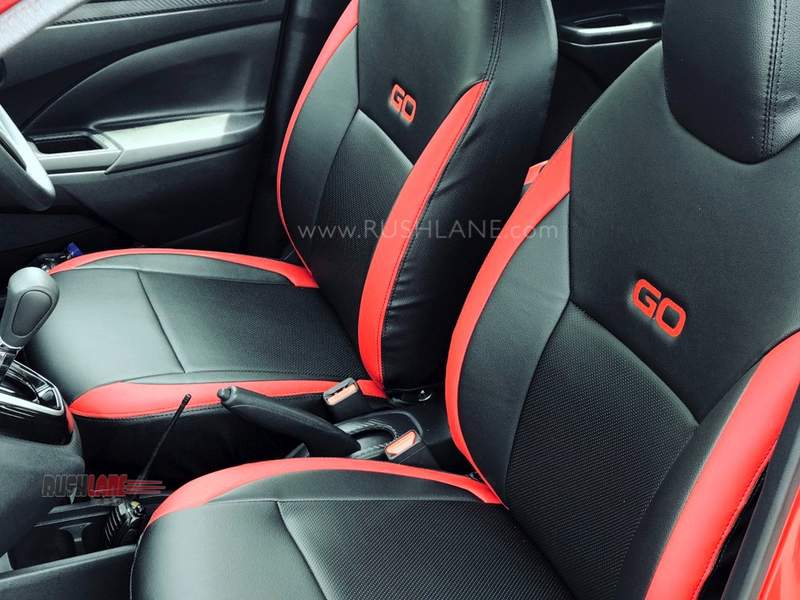
In some cases the AMTs do feel beneficial, in situations where you’d want a sudden downshift thrust to overtake that annoying truck, in which case the CVTs contemplate seemingly forever and overtake mostly only at the mercy of the truck driver. But when that kind of overtakes and manoeuvres are not how you make your day, then the CVT is a good choice to keep in line with your inner peace.
The Datsun Go CVT is powerful enough as a whole for an all-rounder that dwells mostly in the city. The steering, handling, braking and the suspension are all tuned for composed and comfortable driving, that makes this car well suited for office commuters, elders and perhaps anyone living in an urban jungle looking to settle with a long term small car, especially since the car is already equipped with almost all the contemporary features, and a style that wouldn’t quickly go out of fashion.
Launch of 2019 Datsun Go CVT and Datsun Go Plus CVT will take place next month. Upon launch, Go CVT will become the most affordable CVT equipped car in India. In comparison to rivals in this price range, the Datsun Go and Go Plus offer way more features are a lot lesser price, making they best value for money options.


